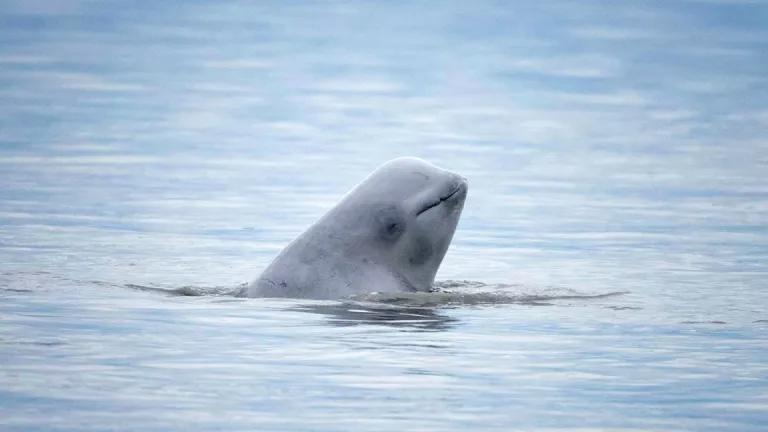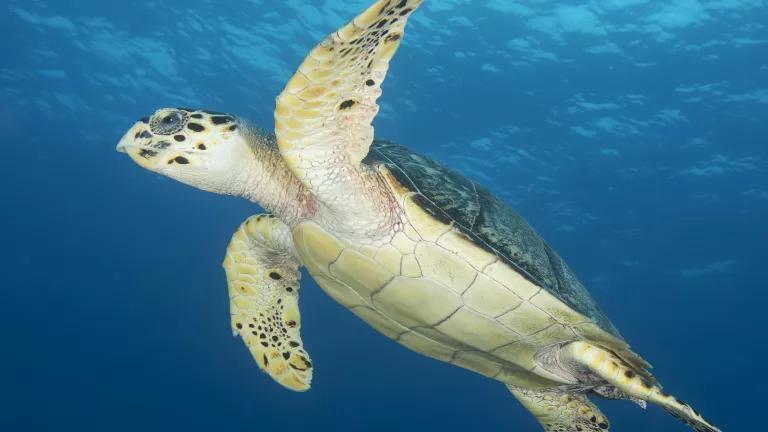NRDC Celebrates 10 Years of Ocean Funding and Urges New York Legislators to Invest for the Next Decade
If you were to dive deep into the ocean offshore New York City right now, you might see endangered North Atlantic right whales winding their way through our busy waters. They're traveling north for summer break, where they'll feed off the shores of New England. Only 450 or so of these majestic mammals exist. This is one of the many reasons why, together with our environmental partners, I'm making my own annual migration to the halls of Albany today to advocate for ocean and Great Lakes funding.
2016 marks the tenth anniversary of the Ocean and Great Lakes Program, a critical tool for funding important research and restoration work in New York waters. It's part of the larger Environmental Protection Fund and has racked up a number of successes in its short time, including:
- Developing a whale monitoring plan to better track and monitor endangered whales' presence in New York waters so that we can help ensure their safe passage through busy shipping lanes and with increased industrial uses, like offshore wind.
- An on-board commercial fishery observer program to help the state scientifically quantify and take steps to reduce the amount of "bycatch," which refers to fish, turtles, and marine mammals that are thrown back, dead or dying.
- The draft New York Ocean Action Plan that identifies key actions and the associated steps the state needs to take to over the next 10 years to achieve a healthy New York ocean.
- New York's Geographic Information Gateway - an interactive web portal designed to help coastal managers, stakeholders, and the public visualize important state and regional geographic data needed for management decisions (e.g., areas at risk of storm surge inundation from hurricanes and marine species and habitat data).
After years of reduced funding for environmental protection, Governor Andrew Cuomo has proposed a historic expanded Environmental Protection Fund of $300 million in the FY 2016-2017 Budget, with $15 million allocated to the Ocean and Great Lakes Program.
This funding would make a world of difference to our understanding and conservation of the state's valuable and vulnerable ocean life. It should be used to:
- Develop a plan to monitor and protect the endangered sea turtle populations that frequent our waters and are vulnerable to fisheries interactions.
- Establish an inaugural State of the Ocean Report that identifies our ocean's baseline condition, sets health indicator targets, and identifies actions and timelines to achieve these conservation metrics. New York needs to be able to quantify successes and pinpoint areas needing more attention.
- Support nitrogen reduction efforts and begin monitoring for ocean acidification. New York is one of the states most vulnerable to ocean acidification because of its economic dependence on shellfish harvesting and because our waters have high levels of nitrogen pollution, which amplifies acidification.
Importantly, funding would help ensure that the whale monitoring plan designed by leading whale experts is fully implemented. Bids for the monitoring work recently came in far above the state's proposed budget and cuts have been made to the acoustic, aerial, and shipboard program. Additional funding would flesh out the study in the way the scientific community recommends.
New York's ocean resources are an economic powerhouse for the state. In 2013, ocean sector industries, such as fishing and tourism, contributed more than $22 billion to New York's gross domestic product (GDP) and supported more than 328,000 jobs. But our ocean and Great Lakes face growing challenges like pollution, loss of habitat, and potentially competing industrial uses. We need to redouble our efforts to promote the responsible siting of offshore renewable energy, while protecting sensitive ocean and coastal habitats and supporting investments in good science to aid in decision-making.
Only a healthy ocean and Great Lakes can continue to provide the jobs, food, and recreation we rely on and celebrate. Today in Albany, I'll be urging our state legislators to invest in the state's whales, fish, sea turtles, and the ocean life they represent and help support by investing $15 million in the Ocean and Great Lakes Program.



